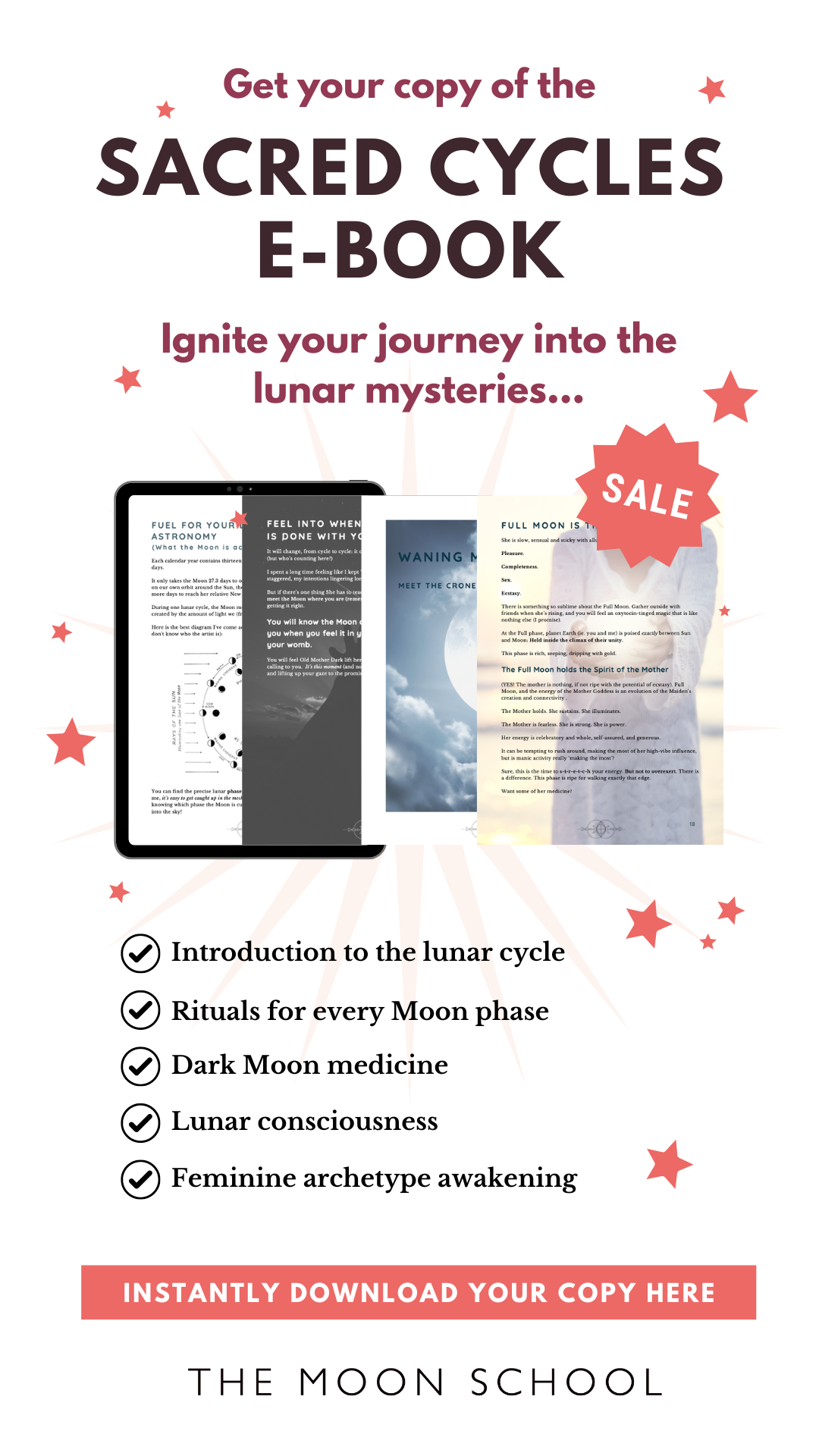The lover archetype represents the pursuit of pleasure, passion, and intimacy.
She is one of our most powerful female archetypes and is a very common figure in mythology, literature, celebrities and archetypal psychology. Yet her popularity belies her complexity, as she holds a multifaceted energy signature.
The lover archetype embodies sensuality, presence, and creativity. Her life force energy is magnetic (to both men and women), charismatic and she has an appeal that’s irresistible. Maybe this is why she’s one of my favourite female archetypes, and why you’re here too, curious to understand her ways…
What is the lover archetype?
The energy of the lover archetype is expressed through a woman tapped into her senses. She feels pleasure on her skin and tastes eros on her lips. She is confident and aligned, enjoying being in full presence with the moment.
This archetype lives in the present moment. Instinctively connected to her senses, she is closely attuned to the here and now. And this, in turn, tunes other people to the present moment too. Maybe that’s key to her magnetism? Her seeming ability to make love to the moment, diving into the eternal now, with her heart and soul.
The lover represents the primal, life-bringing impulse of nature itself. She dances with eros, savouring and offering her pure feminine energy as a prayer to the world.
Someone with a strong lover archetype tends to be guided by her body, and her emotions. Whether she chooses romantic love or creative passion, the lover burns her path through everyday life by following what her sense of feels good.
For some women, this powerful energy may emerge as the yearning to create a family. But it may also be expressed through pure creative instinct. The lover archetype contains the drive to fuel any creative project (often this can be several projects, at once). Plus, she can attract money, support and extra partners in abundance.
To the lover archetype work is play and play is work, and every moment of every story is celebrated.
The lover archetype spends time passionately seeking connection, and is motivated by creating relationships.
She cherishes time with her beloved and makes a passionate lover. When her senses are heightened, and she’s all-in with devotion to her love interest, she’s at her most alive! Yet her sexuality is about more than just sex. It contains a spiritual love and healing potency that our modern societies have all but forgotten.
The lover archetype holds the frequency of sacred sensuality, sexuality, and eroticism that used to be recognized and revered in the temple cultures of old.
Her focus on pleasure can stimulate the sweet waters of healing inside the body. Through deep, loving connection, lovers are able to offer the kind of closeness that can catalyze profound healing.
Do you know somebody like this?
It’s rare for women to fully embody this sacred feminine archetype, as lover archetypes can be the target of so much shame and unease (both projected and self-shaming). Her energy isn’t something we’ve been taught to celebrate.
YET, by embracing the lover archetype, you can tap into your own creativity, and sensual pleasure, as well as achieve intimacy with yourself and the world that you’d only previously dreamed about…
Characteristics, traits and qualities of the lover archetype
Here are some examples of the key characteristics, qualities, and traits of the lover archetype:
Passionate: The lover is known for her extremely passionate nature and the eternal fire that burns within, keeping those inner flames alive.
Romantic: The lover is often associated with romance, love, and intimacy. She also tends to have a deep appreciation for beauty and aesthetics.
Creative: The lover archetype is one of the most heartfelt creative and artistic of all. And with this comes a strong appreciation for music, art, and literature.
Compassionate: This sensitive archetype is compassionate to the core. She has a strong need to help others, whether friends, family or lovers.
Empathetic: The lover is deeply empathic, with a strong ability to understand and relate to the emotions of others.
Sensitive: The incredible capacity for feeling, possessed by the lover archetype means that she can hold the entire spectrum of intense emotions.
Emotional: The Lover is in touch with her emotions and is not afraid to express them openly and honestly.
Intuitive: Because she is so connected to the present moment, the lover is often highly intuitive, particularly when it comes to matters of the heart.
Sensual: Of all the archetypes, the lover has the strongest association with her senses. She absolutely survives, by indulging in her sensory experiences.
Loving: Above all, the lover archetype is known for their capacity to love deeply and unconditionally, making them highly valued and cherished by those around them.
While these traits may vary, depending on the culture or mythology in which the lover archetype appears, they’re generally consistent across different traditions.
Weaknesses, shadows and dark side of the lover archetype
The weaknesses, negative traits and limitations of the lover archetype can emerge through certain behaviours, such as judgments or self-imposed restrictions. OR they may exist in the unconscious, emerging through the shadow side.
Here are some examples of the key weaknesses, negative qualities, and shadow aspects relating to the lover archetype:
Obsessive: The lover can become overly fixated on their romantic or sexual partners, leading to possessiveness and jealousy.
Impulsive: Those with a dominant lover archetype can be impulsive and may make decisions based on their emotions rather than rational thinking.
Self-centred: The lover can become overly focused on their own needs and desires, neglecting the needs and desires of others.
Addictive tendencies: With such a focus on what feels good, lovers can become addicted to the sensations of love and infatuation, leading to destructive behaviors and broken relationships.
Idealistic: Just as the maiden archetype can be idealistic in life, the lover can have unrealistic expectations of their partners in love, leading to disappointment and disillusionment.
Codependent: The lover can become overly dependent on their partners, leading to low self-esteem and an unhealthy and unbalanced dynamic in relationships.
Uncommitted: Craving the thrill of a new intimate acquaintance, the human lover can struggle to stick to one partner, project or opportunity at a time, seeking new stimulation instead of working with what she has.
Insecure: The lover can be deeply insecure and may seek validation and acceptance from their partners, leading to clinginess and neediness.
Superficial: Lover archetypes can be overly focused on appearances and physical attraction, neglecting deeper emotional and spiritual connections.
Escapist tendencies: This archetype can be prone to using love and sex as a way to escape from her problems and responsibilities, leading to avoidance and denial.
Different characters related to the lover archetype
In popular culture, typical lover archetype examples are Marilyn Monroe and Elizabeth Taylor. In television, movies, books and stories, the lover archetype shows up as many different characters. Just as love has many guises, there’s no one perfect example of the lover archetype.
Here are 6 different examples of the lover that show up pretty frequently. You should recognize them all, even if before now you didn’t realize they were examples of this archetypal blueprint.
Romantic partner
The lover archetype is often associated with romantic love and can play the role of a passionate and devoted partner and “true love” in the story of romantic relationships.
Artist
The lover is often creative and can play the role of an artist or musician, expressing their passion and emotions through their art.
Caregiver
The lover archetype is deeply empathic and compassionate, and may show up as a caregiver, nurturing and caring for others.
Friend
Lovers may also play the role of a friend or best friend, forming deep and meaningful connections with others based on mutual love and respect.
Spiritual seeker
The lover archetype can be deeply spiritual and can show up as a character exploring the mysteries of love and the divine. Also connected to the mystic archetype.
Activist
The lover archetype tends to be passionate about causes and may appear as an activist, fighting for justice and equality in the name of love. In this guide, she’s usually related to the huntress.
Examples of the lover archetype in mythology, celebrities, movies and literature
The lover archetype is a common character appearing in mythology, folklore, film, literature – and in the people you meet in everyday life!
Here are 10 lover archetype examples from mythology, film, and literature:
Aphrodite: In ancient Greek mythology, Aphrodite is the goddess of love well known for her beauty, passion, and sensuality.
Juliet from Romeo and Juliet: The beautiful Juliet is deeply in love with Romeo and willing to risk everything for their relationship.
Scarlett O’Hara from Gone with the Wind: Passionate and impulsive, Scarlett is in love with Ashley Wilkes but she ends up falling for Rhett Butler.
Daisy Buchanan from The Great Gatsby: The beautiful and alluring Daisy is in love with Jay Gatsby but ultimately chooses her own comfort and safety over their relationship.
Holly Golightly from Breakfast at Tiffany’s: Free-spirited and romantic Holly is in love with Paul Varjak but in the end chooses to prioritize her own independence and freedom.
Baby from Dirty Dancing: Determined and compassionate, Baby defies societal expectations and discovers her passion for dance and love during a transformative summer holiday.
Guinevere from the Arthurian legends: The beautiful and alluring Guinevere is in love with Lancelot, but ultimately causes the downfall of King Arthur’s kingdom.
Bella Swan from the Twilight series: Bella is deeply in love with Edward Cullen, a vampire, and their relationship is characterized by passion, intensity, and a deep emotional connection.
Jane Eyre from Jane Eyre: Deeply emotional and passionate, Jane falls in love with Mr. Rochester but then chooses to prioritize her own values and morals over their relationship.
Carrie Bradshaw from Sex and the City: Carrie is a romantic and passionate writer. She desires Mr. Big but learns to prioritize her own happiness and independence.
Examples of the lover brand archetype
Many brands use archetypes in marketing, and the lover is one of the most magnetic! Brands that embody the lover often focus on creating emotional connections with their customers and promoting the idea of indulgence and pleasure.
These brands emphasize sensory experiences, beauty, and the pursuit of love or desire. They often use imagery, messaging and celebrities that evoke the very human states of love, sensuality, and emotional connection.
Here are a few brands that align with the lover archetype definition:
Victoria’s Secret: This brand uses the lover to promote its lingerie and intimate apparel, emphasizing sensuality and romance.
Godiva: Known for its luxurious chocolates, Godiva appeals to indulgence and pleasure.
Chanel: The iconic fashion and beauty brand utilizes the lover archetype to evoke feelings of luxury, desire, and sophistication.
Hallmark: Focussing on sentimental greeting cards and gifts, Hallmark embodies the lover archetype by promoting emotional connections and expressions of love.
Tiffany & Co.: This renowned jewellery brand associates its products with romance, love, and special moments.
5 Quick tips for embodying your own inner lover
- Practice self-love: Take care of yourself. Tune into your needs. And meet them.
- Get curious about your emotions: When a feeling rises, get curious about it. Open up to let if flow and be felt fully. What is it there to tell you?
- Awaken your sensuality: Learn to FEEL with your human body! Slow down so you can create a physical relationship with the present moment.
- Explore desire: What do you crave? What do you deeply yearn for? Get curious about the directions you’re being drawn in.
- Be playful!: The lover doesn’t take it all so seriously. The world is a playground, and playfulness will help you get a sense of freedom and delight.
Want more? Read: 15 Tips for Awakening the Lover Archetype in YOU






